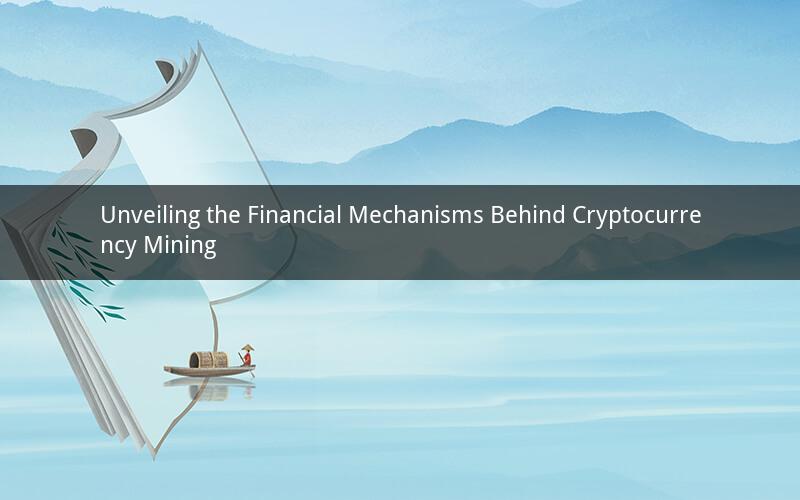
Introduction:
Cryptocurrency mining has emerged as a pivotal process in the world of digital currencies. It serves as the backbone for the security and decentralization of blockchain networks. However, the process of mining itself is shrouded in complexity, and many are curious about how miners can generate profits from their efforts. In this article, we delve into the financial mechanisms behind cryptocurrency mining and explore the various factors that contribute to its profitability.
I. Understanding Cryptocurrency Mining
To comprehend how cryptocurrency mining makes money, it is essential to first grasp the fundamentals of the mining process. Cryptocurrency mining involves solving complex mathematical puzzles to validate and record transactions on a blockchain network. The miner who solves the puzzle first is rewarded with a certain amount of cryptocurrency.
II. The Role of Proof of Work (PoW)
Proof of Work (PoW) is the consensus mechanism most commonly used in blockchain networks, including Bitcoin. It requires miners to perform computational work to validate transactions and add new blocks to the blockchain. The difficulty of the puzzles adjusts dynamically to ensure a consistent block creation time.
III. Block Rewards
One of the primary sources of income for miners is the block reward. When a miner successfully mines a new block, they receive a predetermined amount of cryptocurrency as a reward. This reward serves as an incentive for miners to participate in the network and secure its integrity.
IV. Transaction Fees
Apart from block rewards, miners can earn additional income through transaction fees. When users make transactions on the network, they can choose to include a transaction fee to prioritize their transaction. Miners are more likely to include transactions with higher fees in their blocks, leading to increased revenue.
V. Energy Costs
While mining can be lucrative, it is crucial to consider the energy costs associated with the process. Cryptocurrency mining requires significant computational power, which consumes a substantial amount of electricity. The profitability of mining depends on the balance between the rewards earned and the energy expenses incurred.
VI. Hardware and Maintenance Costs
Miners need specialized hardware, such as ASIC (Application-Specific Integrated Circuit) miners, to perform the necessary computations. The cost of purchasing and maintaining this hardware can be substantial. Additionally, cooling systems and other infrastructure requirements further contribute to the overall expenses.
VII. Market Dynamics
The profitability of cryptocurrency mining is heavily influenced by market dynamics. The value of the cryptocurrency being mined plays a crucial role. If the price of the cryptocurrency increases, miners can earn more from their efforts. Conversely, if the price decreases, the profitability may diminish.
VIII. Mining Pools
To enhance their chances of earning rewards, many miners join mining pools. Mining pools are groups of miners who collaborate to combine their computational power and share the rewards proportionally based on their contributions. This approach increases the likelihood of mining a block and reduces the variance in earnings.
IX. The Impact of Difficulty Adjustments
The difficulty of mining puzzles adjusts over time to maintain a consistent block creation time. As more miners join the network and increase the computational power, the difficulty increases. This adjustment ensures that the rate of new block creation remains constant, but it also affects the profitability of mining.
X. Long-Term Viability
While cryptocurrency mining can be profitable, it is essential to consider the long-term viability of the endeavor. The mining landscape is continuously evolving, with new technologies and competition constantly emerging. Miners must stay updated with technological advancements and adapt to changing market conditions to maintain profitability.
Questions and Answers:
1. What is the primary reward for miners in cryptocurrency mining?
Answer: The primary reward for miners is the block reward, which is a predetermined amount of cryptocurrency given to the miner who successfully mines a new block.
2. How do transaction fees contribute to a miner's income?
Answer: Miners can earn additional income through transaction fees by including transactions with higher fees in their blocks, as they are more likely to be prioritized.
3. What factors influence the profitability of cryptocurrency mining?
Answer: The profitability of mining is influenced by factors such as block rewards, transaction fees, energy costs, hardware and maintenance expenses, market dynamics, and the difficulty of mining puzzles.
4. How do mining pools work, and why do miners join them?
Answer: Mining pools are groups of miners who collaborate to combine their computational power. By joining a mining pool, miners increase their chances of mining a block and sharing the rewards proportionally based on their contributions.
5. What are the challenges faced by miners in the long term?
Answer: Miners face challenges such as increasing energy costs, competition from new entrants, evolving technology, and changing market dynamics. To maintain profitability, miners must stay updated and adapt to these challenges.